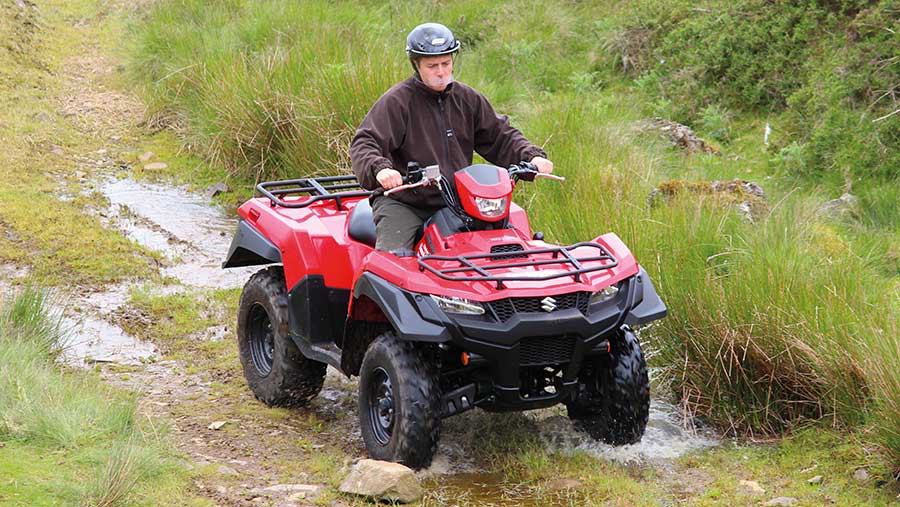Opinion: Why farmers should take ATV helmet rules seriously
 © MAG/Oliver Mark
© MAG/Oliver Mark It is a legal requirement to wear a helmet when at work on a farm ATV. Full stop. End of discussion.
This still seems to be misunderstood and regularly flouted across the agricultural industry, despite helmets being a simple, relatively inexpensive, and potentially life-saving accessory.
See also: On test: E-Bike is nippy farm runaround
As such, there is no excuse to ride without one, or expect an employee or family member to do so.
In the past five years, ATV accidents have accounted for 15 deaths in agriculture – more than any other moving vehicle – and irrevocably affected the lives of the families involved.
Beyond that are countless other serious and life-changing incidents that have occurred and could have been avoided.

Jill Hewitt, National Association of Agricultural Contractors chief executive, board member of the Farm Safety Partnership and part of HSE’s industry advisory committee© Jill Hewitt
An incident involving a helmetless rider will almost certainly be central to any investigation and could result in enforcement action and possible prosecution.
Similarly, if an inspector sees someone working without a helmet, they will stop the activity immediately and start asking serious questions.
This applies to owners, self-employed workers, employees and any other person using an ATV – including children and farm visitors.
Note, too, that most farm quads are suitable only for people aged 16 and over, so check this with the manufacturer. It is illegal for any ATV to be driven for a farming activity by children under the age of 13.
Of course, simply wearing a helmet will not keep everyone fully protected and it is vitally important to ensure that all riders are also competent and trained to handle the machine.
Training is crucial because it covers essential active riding techniques necessary for safe operation.
This is a legal requirement – no ifs or buts – and it is readily accessible through a variety of providers at an affordable price.
If you don’t have a helmet to wear when using your ATV at work then get one now or risk prosecution – and the life-changing results of a serious injury or death.
Jill Hewitt is National Association of Agricultural Contractors chief executive, board member of the Farm Safety Partnership and part of HSE’s industry advisory committee.
A word from the Health and Safety Executive
“If an HSE inspector visits a farm and witnesses someone operating a quad bike without head protection, then there is enough legislation to allow for firm enforcement action. This will most likely be a formal notice to prohibit the use of the ATV until a helmet is obtained which, if ignored, can result in prosecution,” says HSE’s Christopher Maher, HM inspector of health and safety.
“In addition, the inspector will, in most cases, recover the full costs of dealing with the breach of the law.”
“It’s a myth that the requirement to wear a helmet at work on an ATV is not ‘written in law’. Like most health and safety laws, the duty to provide safe equipment, training, information, personal protective equipment and safe ways of working rests with those in control of the activity or equipment.”
“HSE does not shy away from holding people to account and ensuring compliance. There is nothing new here – it is based on the Health and Safety at Work Act 1974 and other long-standing legislation.”
What about UTVs with a roll cage?
Helmets are a good idea but not essential – the important thing is to make sure you fasten the seat belt, or you’ll be thrown out of the machine. Read more on the safe use of all-terrain vehicles (ATVs) in agriculture and forestry AIS33

